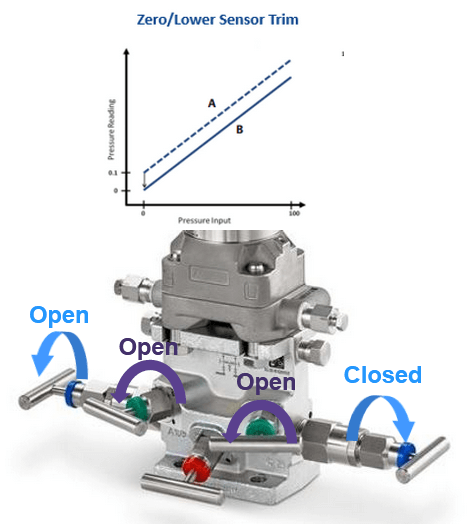Emerson’s Michael Flesch shares how multivariable transmitter calibration and manifold valve operation affect the performance of natural gas flow measurement applications at the Emerson Exchange Americas Virtual Series. Here is his presentation abstract:
Following a basic manifold valve sequencing procedure when performing regular maintenance on a differential pressure (DP) measurement installation with transmitter is generally straight forward. Understanding the “why” however, is what most people don’t often think about. In this session I’ll be providing guidance on how to correctly operate valves before and during transmitter calibration for Natural Gas applications.
Michael opened by providing a calibration overview for differential pressure (DP) flow measurement in natural gas measurement applications. Transmitter calibration is comparing the values to known values and forcing them to align. Rosemount products need a zero-trim calibration to negate mounting effects. A full field calibration is only required if transmitters are out of specification. Calibrating the Rosemount 4088 multivariable transmitter is comparable to individually calibrating differential pressure, static pressure and process temperature.
The Rosemount 304 NG manifold is used in natural gas metering applications and has two equalizer valves for redundant blockage. Any leaks would affect the measurement for natural gas during custody transfer.
The procedure for calibrating DP transmitters is first to connect the transmitter manifold to a pressure source. Next connect the transmitter to a configuration tool such as the AMS Trex device communicator and then perform a zero trim function and an upper sensor trim function. Next, you would perform a static pressure calibration and then a process temperature calibration. It is important to calibrate the DP sensor at line pressure to negate any line pressure effects.
The gas manifold with the two equalize valve require closing the low side block valve, opening the low side equalize valve, opening the high side equalize valve and verifying the high side block valve is open to perform the zero-trim calibration. The equalize valves must be manipulated so that they high side and low side of the transmitters are experiencing zero DP.
Michael showed the gas manifold settings for each of the calibration steps required. Read the post, Being Consistent with Manifold Valve Operation, in the Emerson Exchange 365 community for more on the manifold valve positions for each calibration step.
Consistency in manifold valve operation is important whether you are measuring DP of a liquid, steam, high-pressure or low-pressure gaseous process. Even though natural gas manifolds add some complexity, they provide consistency. Creating a similar habit when using the same or similar types of manifolds help to ensure quality and consistency of the measurement.
Visit the Rosemount Instrument Manifolds and Multivariable Measurement sections on Emerson.com for more on the technologies and methods to assure accurate DP flow measurement.


